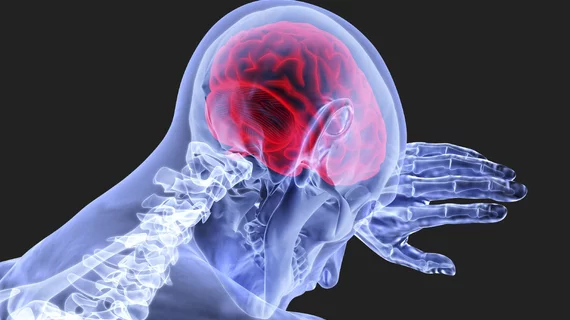AI performs well when detecting intracranial hemorrhage on brain CT, but further research is ‘critical’
Convolutional neural networks earned high marks for detecting intracranial hemorrhage on CTs, but researchers caution there is still a “critical need” for additional studies, experts reported this week in the European Journal of Radiology.
Non-contrast computed tomography of the cerebrum (NCTC) is considered the go-to standard of care for diagnosing intracranial hemorrhage (ICH). Due to various factors, these cases have increased over the last decade. And with staff shortages compounding an already burdensome workload for radiologists, some patients presenting with ICH could face a delayed diagnosis.
The development of convolutional neural networks has emerged as a possible solution, Simon Lysdahlgaard, with the Department of Radiology and Nuclear Medicine at the University Hospital of Southern Denmark, and co-authors stated.
“CNNs have the potential to identify ICH seconds after the scan is performed, decreasing the delay before the scan is interpreted by the radiologist,” the group added Wednesday, Nov. 24.
The authors of this study sought to examine the accuracy of CNNs compared to radiologists when detecting ICH on NCTC. With radiologists used as the reference standard, 5,119 records were retrospectively analyzed.
Upon comparison, pooled sensitivities, specificities and summary receiver operating characteristics curve (SROC) scores from the CNNs were 96%, 97% and 98%, respectively. When employing external validation datasets, the sensitivity figures dropped slightly to 95%.
Though the CNN performed well, the authors admit their study has limitations and further research involving external datasets, which were few in this study, is warranted.
“All included studies had non-randomized retrospective designs, where only four studies tested CNN performance on external datasets,” the authors explained. “Algorithm-performance compared to clinicians or comparison between clinicians with and without algorithms is crucial but difficult to evaluate in the artificial in silico context of these type of studies.”
Full study details can be found in the European Journal of Radiology.

